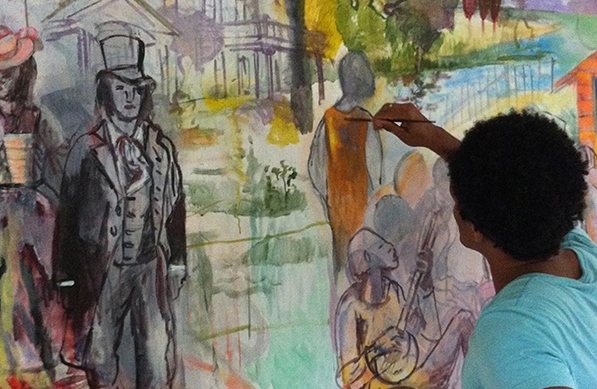Telling a different slave story

By Debbie Ransome
Forget the traditional tales of slavery, escape and freedom much loved by Hollywood.
There’s a different slavery story which is now beginning to be told – and in the places where it actually played out.
Many in the Caribbean and in the Diaspora will have heard stories of ancestors who were freed slaves and fought with the British against the US in 1812.
To use the theme running through the latest version of their story, River of Freedom: “A Black man in a red coat, fighting another man’s war.”
Hundreds of slaves took up the offer to switch sides and fight with the British in return for freedom and land. The Corps of Colonial Marines were essential to a British army depleted by the Napoleonic Wars and then facing a fight in America.
The war was to have implications for the future shape of Canada and for native Americans but it also created a body of freed slaves who needed a new home.
Free land…but where?
The Caribbean part of the story starts after this War of Independence: where could the King place these freed slaves left on his hands after the fight with America?
River of Freedom, a musical performance, seeks to tell the tale of one slave, Nathaniel, who leaves his master in Virginia to fight with the British for the dream of freedom.
After leading British troops to burn down his former master’s plantation, Nathaniel is relocated to Bermuda, where the British placed hundreds of disbanded black soldiers while working out what to do next.
Finally he arrives in south Trinidad, where free land was later to be made available.
The musical pot-pourri soundtrack uses everything, including spirituals, Stravinsky and pan, to illustrate Nathaniel’s journey.
Multi-national cast
The wide-ranging nature of the show comes from its multi-national creators.
American Caitlyn Kamminga researched the history of the Colonial Marines in Virginia and Trinidad.
Cambridge-educated Adam Walters spent time in Spiritual Baptist churches for inspiration for a soundtrack that uses spiritual music for the hope of freedom, Stravinsky influences for the uncertainty of the freed slaves, then modern-day pan and the Trinidad national anthem for the sense of freedom obtained in south Trinidad.
The whole package is delivered by a small team of Caribbean and global performers and artists including Che Lovelace, Michael Cherrie, Krisson Joseph, Mia Gormandy (pannist), Kwame Ryan (conductor) and the musicians from the University of Trinidad and Tobago (UTT).
Taking it home
The new show had its world premiere in the home found by many of the freed slaves – Moruga, south Trinidad – followed by performances in Port of Spain.
The plan, following audience feedback locally, is to take the show across America and then to the UK and Canada.
The performance I attended had people humming along to the spirituals and clapping to the joyous music in part three. Afterwards, people were eager to shake the hands of the small cast and congratulate them.
One man from Moruga thanked the creators for writing the story of his ancestors.
Before wrapping up, this writer has to admit to a little self-interest.
I attended the show because my Trinidadian father had talked of Hardbargain village in south Trinidad, where many of the freed slaves, Ransome ancestors, had grown up.
Growing up, I had always thought of it as a tale of my ancestors fighting on the wrong side of the British-America War.
Hearing Nathaniel’s story so well told, I now understand the yearning for freedom which inspired the ancestors in my father’s side to take the King’s offer of freedom and land and fight another man’s war.
The writer Debbie Ransome is Editor of Caribbean Intelligence.com
